Lifeweaver is the latest hero addition to Overwatch 2, set to launch in-game on the Support Hero roster within the Season 4 release on April 11, 2023. There have been a few sneak peeks of Lifeweaver’s capabilities already, with many players looking to start learning everything they can in advance to Season 4 so they’re not lost when launch time comes. If you’re wondering how to play Lifeweaver in Overwatch 2, we’ve got all the information you’ll need. Here’s everything you need to know about Lifeweaver’s Hero kit and how to play him in Overwatch 2.
Lifeweaver’s Hero Kit: All Abilities, Explained
Lifeweaver’s abilities are quite unique in terms of providing utility to your team, and his hero kit is unlike any other in the game. For this reason, it’s important to understand how these abilities function in-game prior to picking him up and jumping into a match. After spending some time with Lifeweaver in the Season 4 Early Access build, I’ll be sharing everything I’ve discovered to help you get a head start in terms of learning how to play him.
Healing Blossom
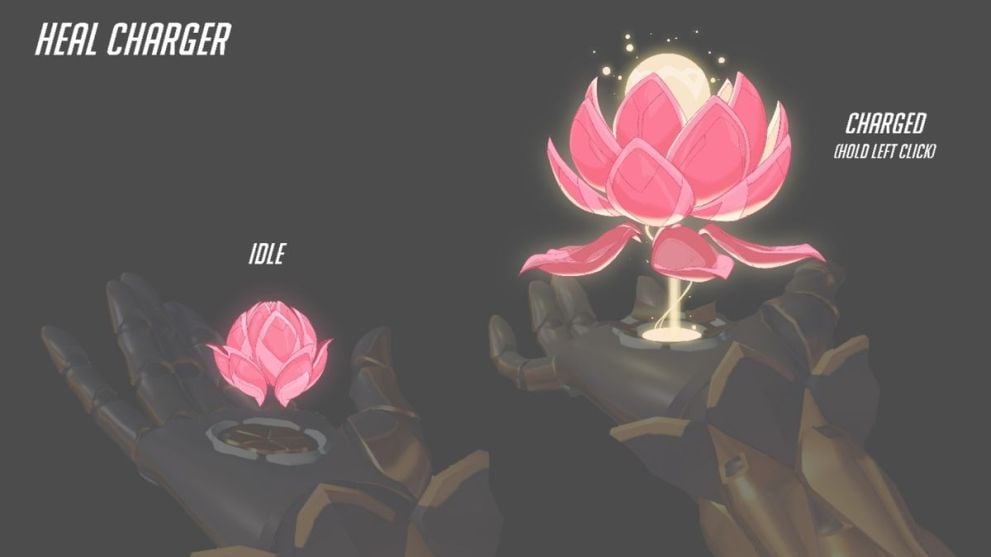
Lifeweaver’s Healing Blossom is his primary ability, allowing him to charge up a shot with his left click and send it to an ally for a small burst of healing. This is Lifeweaver’s only way of providing healing to his team apart from his Ultimate ability, so here’s everything you’ll need to know about this ability when learning how to utilize his kit best:
- Healing Blossom can heal between 10-65 damage per shot, depending on how long left click is held for.
- Healing Blossom has 12 charges to use before reloading and a 30-meter range.
- Healing Blossom is blocked by, and can not travel to, teammates who are on the opposing side of an enemy shield.
- Healing Blossom tracks onto your allies upon release, meaning you don’t have to worry as much about aim and precision.
- Thanks to this tracking, Healing Blossom can somewhat heal an ally that is moving out of your line-of-sight, or heading behind a wall, if you time it correctly.
- There is a short delay between each charge of Healing Blossom, meaning Lifeweaver’s overall healing isn’t as powerful as other Supports.
- To ensure your team has steady HP regeneration, you’ll need to work closely with your other Support to keep them up during big team fights, as Lifeweaver’s heals-per-second won’t be enough to outdo enormous bursts of enemy damage.
- Healing Blossom will automatically reload upon switching to Thorn Volley.
Thorn Volley
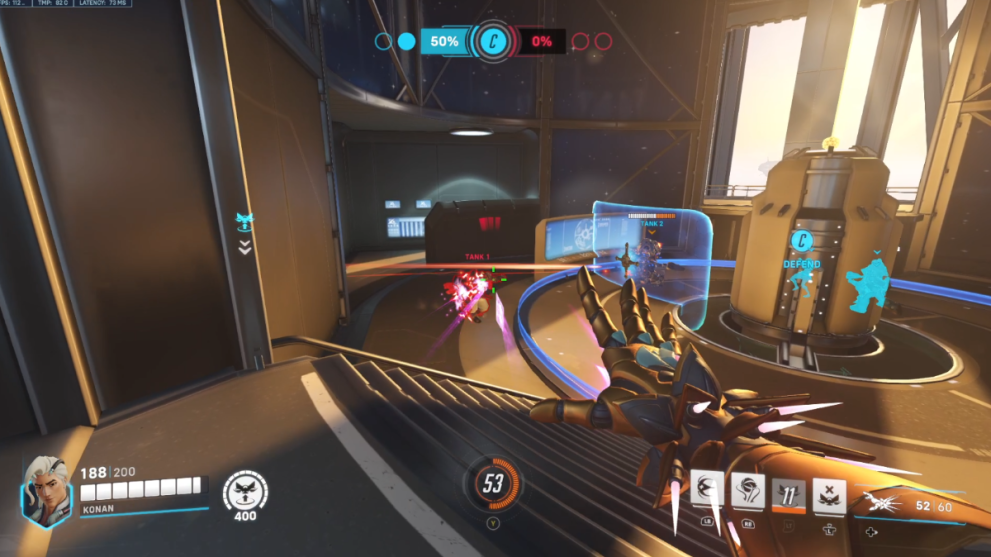
Thorn Volley is the secondary ability linked to Lifeweaver’s primary fire, which can be switched by pressing whichever button you have bound to change or scroll Hero weapons. Thorn Volley is a projectile-based shot that allows Lifeweaver to deal small amounts of damage, making it a valuable option to switch to when helping to finish off an enemy with one bar of HP or to help defend yourself when you get swarmed or out of position.
- Thorn Volley has 60 bullets total and uses two bullets per shot. Each bullet deals five damage on impact.
- A single click of Thorn Volley is equal to one shot, but you can also hold down your click to rapidly fire these projectiles with a similar speed and spread to Ramattra’s primary fire.
- Thorn Volley will automatically reload upon switching to Healing Blossom.
Petal Platform
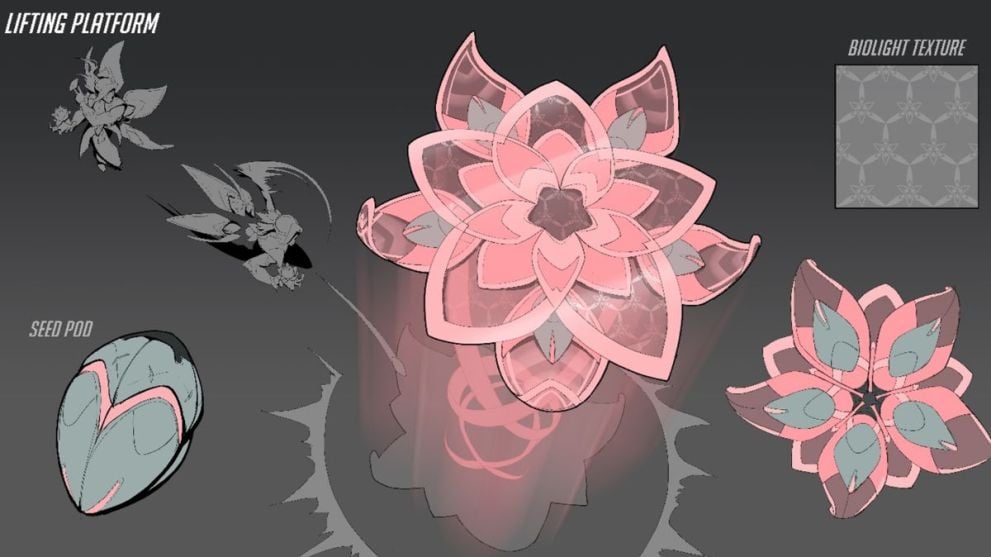
Lifeweaver’s Petal Platform ability allows him to create an elevator-like platform that will spring upwards to a second-story level once stepped on. This Platform can be stepped on by allies and enemies alike and contains a lot of potential for shifting players to the high ground, enabling shortcuts and map rollouts as Lifeweaver, granting advantage to your ally’s Ultimate abilities, and disrupting the Ultimates of your opponents.
- Petal Platform is a single-use ability with a cooldown of 12 seconds.
- Petal Platform has 400 HP and can be blocked by shields when being thrown.
- Petal Platform can not be eaten or deflected by the enemy.
- Once launched and sitting on the ground, Petal Platform has an infinite uptime until stepped on, or another Petal Platform is created.
- You can benefit from setting up your Petal Platform in advance of a team fight or the beginning of the match as if you wait to use it, you’ll have a second charge ready to go once it times out.
- Once somebody stands on Petal Platform, it will rise during a 10-second timer before breaking.
- During Petal Platform’s use, you’ll hear a ticking timer to indicate how much longer you have left before it breaks.
- There is a built-in super jump technique that can be achieved by jumping at the exact point that Petal Platform reaches its peak height.
Life Grip
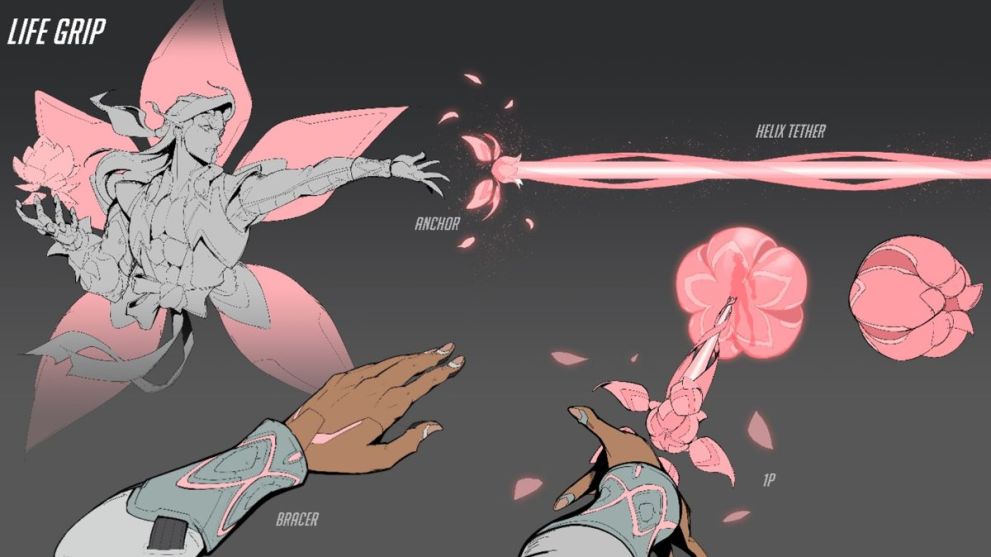
Life Grip is a unique ability that allows Lifeweaver to lock on to an ally and pull them back to his position from a distance. This ability can pull a teammate from ground level onto the highground and vice versa, and can be paired with Petal Platform to pull them up and over obstacles.
- Life Grip has a 30-metre range, with a 20-second cooldown upon use.
- Life Grip grants temporary immortality and fortification to the targeted ally as it pulls them towards you, meaning your target can not be stunned or killed whilst in Life Grip.
Rejuvenating Dash
Rejuvenating Dash is the ability bound to Lifeweaver’s shift key by default and operates as a simple form of mobility, similar to Hanzo’s Lunge. Rejuvenating Dash propels Lifeweaver in the direction he is moving while also restoring a small burst of healing to himself. Here’s some key information to keep in mind when using this ability or pairing it with the rest of Lifeweaver’s kit:
- Rejuvenating Dash moves Lifeweaver about the same distance as Hanzo’s Lunge and provides 25 burst healing to himself upon use.
- Rejuvenating Dash has a 5-second cooldown between uses.
- Rejuvenating Dash can be used at the peak of Petal Platform’s super jump to propel Lifeweaver across the roofs of buildings or over walls for easy rollout or escape.
Parting Gift
Previous to the reveal of Lifeweaver, Junkrat was the only hero to carry a passive ability that triggers upon death. However, with Lifeweaver’s Parting Gift added into the mix, he now has a unique and exciting passive that generates a flower in the place where he was killed. An ally or enemy can then pick up this flower for a decent amount of healing.
- If an ally picks up Parting Gift, they will receive 250 healing.
- If an enemy picks up Parting Gift, they will receive 75 healing.
Tree of Life

Tree of Life is Lifeweaver’s Ultimate ability, allowing you to summon a large tree anywhere within your sight and range. Upon being summoned, Tree of Life will provide an initial burst of healing to all of Lifeweaver’s teammates within AOE and additional healing in waves across a timed duration or until the Tree of Life’s HP reaches zero.
- Tree of Life has 1000 HP
- Tree of Life’s initial healing burst will fulfill 150 HP to allies
- Following the initial burst, Tree of Life will provide 8 additional pulses of healing that trigger every 1.75 second, granting allies 50 HP with each.
- This totals 550 healing over Tree of Life’s duration for all allies.
- Tree of Life can be blocked by enemy shields.
- Tree of Life needs line of sight to your allies within the AOE in order to provide heals.
- If Tree of Life falls, it will not take fall damage. This means that you can place it on Petal Platform and walk onto the platform to grant yourself cover, as well as healing your you and all of your allies.
How to Play Lifeweaver in Overwatch 2
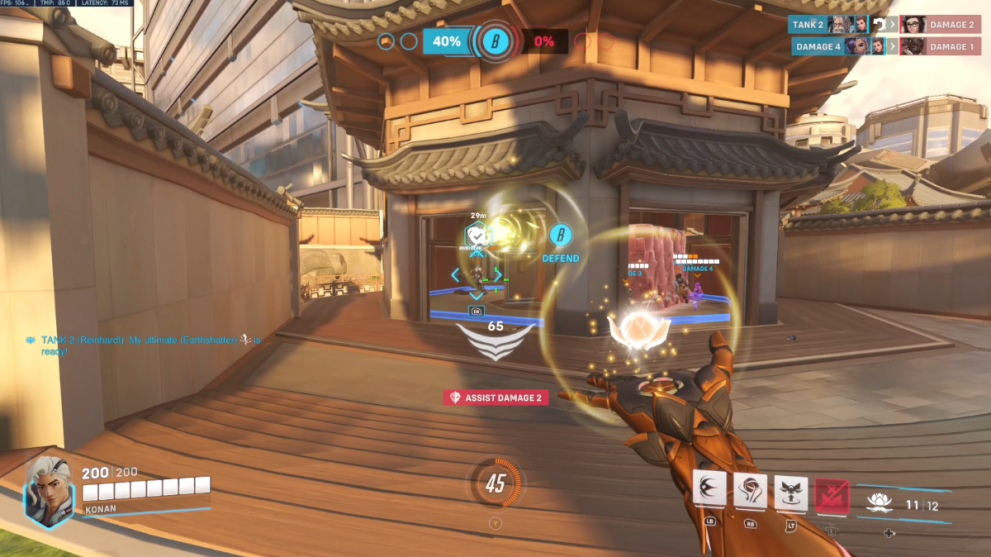
Lifeweaver’s abilities are very technical, and a lot of thinking is involved in playing him to his full potential. To get value from Lifeweaver as a pick in your team comp, you’ll need to keep several things in mind and consider learning how and when to use his unique techs and combinations to your full advantage.
Team Synergy & Communications
Lifeweaver’s abilities revolve around enabling his teammates and helping them escape dire situations. With Lifeweaver, communicating with your team to work together will be vital to getting high value from his kit, such as combining Petal Platform with your DPS ultimate or using it to boost your Ana up to high ground quickly for better line of sight so she can scope in and heal the Tank that is out of your 30-meter range.
If you’re not communicating with your team and are using your abilities to benefit yourself, you’ll be missing many opportunities to perform at Lifeweaver’s full potential. While the Petal Platform is excellent to use on yourself to reposition or create a temporary high ground, you should always be considering how you can use it alongside your allies to win the next team fight rather than how you can use it to secure a single kill while your team dies below you.
The same can be said for Lifegrip. You’ll need to communicate with your team about when and how you’ll be using this ability, as there is potential to harm your team here and interrupt playmaking. Things you’ll want to be communicating and using Lifegrip for are scenarios such as having your tank charge in and build up a lot of Ult charge, then pulling them back out to safety, or saving a vulnerable ally who’s been booped off the map and is falling to their death.
Cooldown Management & Positioning
One of Lifeweaver’s biggest vulnerabilities is his massive hitbox. In comparison to other Support heroes, and even some DPS heroes, Lifeweaver’s size is much bigger. This means that he’s a much easier target and will be at a higher risk of taking more damage than the average Support. Because of this, positioning will be key in terms of keeping yourself alive, so you should always be looking to use natural cover and reposition yourself to safer ground when possible.
Cooldown management will also be very important to get into a healthy rhythm when playing Lifeweaver. Changing between his Healing Blossom and Thorn Valley on tempo will help in creating a lot of uptime for him and make the most of his auto-reload feature.
You should also be considering things such as setting up one Petal Platform on the ground in anticipation of big team fights or the beginning of a match, as doing so will enable you to use the platform to elevate yourself and then have another one to use immediately after it breaks.
You should also aim to make the most out of Rejuvenating Dash, as this ability has a cooldown of only 5 seconds and provides both healing and movement on use. Using it in rhythm with your primary fire tempo can benefit your Ult Charge and help you to build up power for Tree of Life on a much more frequent basis. As Tree of Life is such a powerhouse Ult with the ability to turn a team fight, you’ll be wanting to build this one ASAP.
Switching Between Lifeweaver’s Primary Fires & Auto-Reload
When switching from one of Lifeweaver’s primary fire abilities to the other, the primary fire ability in which you just switched from will be automatically reloaded.
This means that, for example, if you are using Thorn Volley and use up all of your ammo, you can switch back to Healing Blossom to perform a bust heal or two and then switch back to Thorn Volley. Upon switching back, Thorn Volley will be completely reloaded, allowing you to enter a steady rhythm when switching between Lifeweaver’s two primary fires.
Utilizing Super Jump With Petal Platform For Mobile Rollouts & Escapes
Petal Platform’s super jump can be combined with Rejuvenating Dash to proper Lifeweaver over rooftops and walls, allowing him to perform handy rollouts and get back to the team fight quicker, confuse the enemy with his sudden repositioning, or making a big escape from a lost team fight. Content creator and Rank 1 Support player Aspen has recently shared a video on her YouTube channel showcasing 40 examples of impressive Lifeweaver rollouts, so this is a great place to start when it comes to learning them for yourself.
That’s everything you need to know about Lifeweaver’s Hero kit and how to play him in Overwatch 2. For more helpful gameplay guides, lists, and news, check out the rest of our content. We have a range of Overwatch topics regarding all of your favorite heroes and villains, so feel free to scroll down to the related links below and have a look for yourself.
